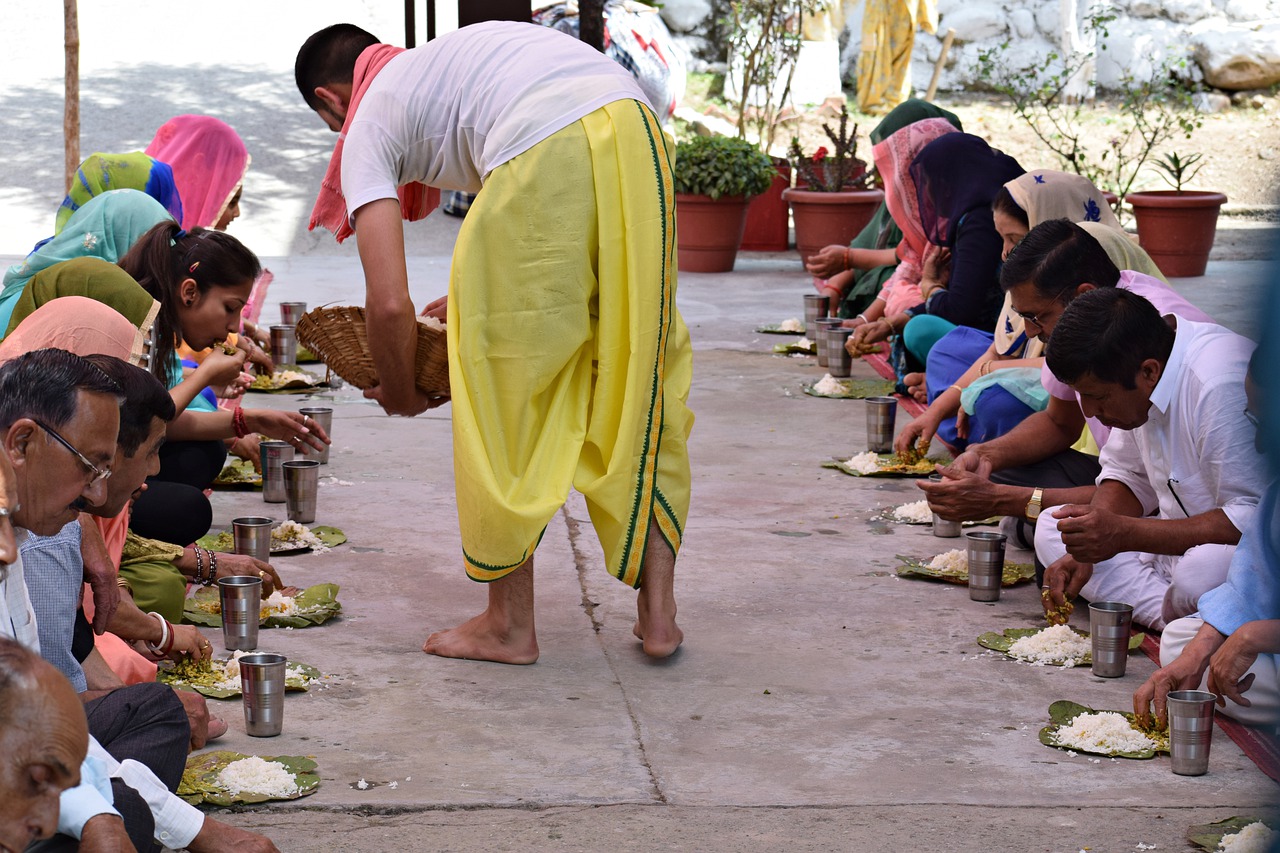India has the largest percentage of undernourished people in South Asia and is also one of the most undernourished countries in the world. Schemes aimed at nourishment, such as the Food Security Act, have not fulfilled their purpose yet. This is because they are implemented in disconnected silos.
Proper nutrition is key for good health and the prevention, treatment and management of diseases. A sustainable and healthy diet is a fundamental requirement throughout one’s life. However, the relationship between food, nutrition and health is complex, dynamic and multi-dimensional.
Today, in the developing world, around 800 million people are suffering from chronic undernutrition. India currently has the largest percentage of undernourished people in South Asia and is also one of the most undernourished countries in the world. In 2020, the Global Hunger Index (GHI) ranked India 94 out of 107 countries with a score of 27.2, thus placing India in the ‘serious’ category. As per the GHI report 2020, 14 percent of India’s population was undernourished.
At the same time, the latest National Family Health Survey of 2019-20 (NFHS-5) has also shown that the rate of malnutrition in India has increased as compared to the year 2015-16. This is mainly the result of India’s inability to prevent undernutrition during the 1000-day period, i.e. from conception to two years of age. Consequently, this has emerged as one of the most critical challenges for India’s development planners in recent times.
What Causes Such Chronic Malnutrition?
Undernutrition in women is a leading cause of low birth-weight babies and poor growth. Low birth-weight is a significant contributor to infant mortality. At the same time, the babies who survive are more likely to suffer growth retardation and illness throughout their life; and growth-retarded adult women are more likely to carry on the vicious cycle of malnutrition by giving birth to low-weight babies.
The factors which contribute to undernutrition are household food insecurity, poor diets, inadequate preventive and curative health services, and insufficient knowledge about ante-natal (prenatal) care of pregnant women and infant feeding practices. In addition, unequal food distribution within the household – by which women and girl children get less food than the male members of the family – is also a challenge.
India’s healthcare landscape is marked by various existent and emerging diseases, which are spread across one’s life – many caused by malnutrition. The prevention of malnutrition-related chronic diseases demands a distinct strategy for ensuring that people receive an energy-sufficient and nutritionally-appropriate diet at every stage of their life.
And the best test of such a strategy will be the nutritional status of children, adolescents and women in India.
Traditionally, India’s nutrition strategy has hinged on interventions delivered through nutrition-specific policies and programmes, like the National Food Security Act (NAFSA), Integrated Child Development Services (ICDS), Mid-Day Meal Program, Targeted Public Distribution System (TPDS), Balwadi Nutrition Program, and so on.
But it can be seen that over the years, such isolated nutrition-specific programs have failed to improve the nutrition status of the target population. This is because, although to a certain extent such programs have succeeded in reducing food insecurity of households, they have failed to address the problem of unequal food distribution within the household, due to which women and children (primarily the girl child) are denied adequate food intake.
The Need for a More Holistic and Integrated Approach
One of the crucial reasons for this shortcoming is that this nutrition-specific approach has failed to connect nutrition programs with other flagship programs related to health, such as the Janani Suraksha Yojana (JSY), National Rural Health Mission (NRHM), Water, Sanitation and Hygiene (WASH) and so on, which have strong linkages with nutritional outcomes.
Stronger integration between these schemes will improve the nutritional status of adolescent girls, pregnant women, lactating mothers and children. For instance, the Mid-Day Meal scheme is a nutrition program (providing school children with lunch), aiming to enhance the nutritional status of children and adolescents. But for the program to succeed, it is important that the children develop self-hygiene practices and the food is also cooked in a sanitary and hygienic manner. Therefore, in order to improve nutritional outcomes among children most effectively, the government must link the Mid-Day Meal program (a nutrition program) with the WASH program (a health program).
It is therefore imperative to adopt a multisectoral approach to address the issue of malnutrition in India’s policy framework.
There are certain programs that are already multisectoral in nature, whose success provides hope for better convergence of health and nutrition programs in the future. Such programs provide maternity benefit – to improve the health and nutritional status of expectant and lactating mothers by promoting positive health behaviours, including service utilization during pregnancy and safe delivery and lactation practices. They also encourage women to follow optimal infant and child-feeding practices, including early and exclusive breastfeeding for six months and providing cash incentives for improved health and nutrition of mothers. But these maternity benefits are restricted for only the first two live births.
There have also been nutrition-related sectoral plans in areas such as agriculture, public distribution, education, forestry, maternal and child health, food processing, information and broadcasting, labour, rural development and urban development. However, most of these inter-sectoral plans have not been accompanied by additional resource allocations, coordinated efforts or serious monitoring; they have mostly remained only on paper.
There is an established relationship between nutritional status and clean water, sanitation, women’s empowerment, education, non-discriminatory social structures, and a well-resourced and efficient health system. Every link in the chain of malnutrition needs to be considered, including adolescent girls, newly-wed women, expectant mothers, breast and supplemental feeding in infancy, and the preschool years.
High quality, multidisciplinary nutrition research and effective convergences between health and nutrition strategies are fundamental to improving national health. Though the need for convergence in planning and implementation is acknowledged by policymakers, effective platforms for consultation and coordination are not yet visible. As planning and implementation need to be decentralised as much as possible, convergence should be accomplished at the state, district, block and village levels.
Navaneeta Majumder is an Assistant Professor of Sociology at GLS Law College, Ahmedabad and a PhD scholar in the School of Development Studies at Tata Institute of Social Sciences, Mumbai. She works in the interdisciplinary areas of gender, health and development, and sociology of law and crime.


